Have you ever trained a pet that it followed your commands and came right back at the whisper of your voice? If yes, then you must be aware that the training process can be exhausting initially, but it’s all worth it in the end. And oh, let’s not forget the cuteness and loyalty that shines when the pet comes running back at you.
The same is the case with a flock of chickens. If you train your chickens to return to the pen, they’ll flap their wings, jiggle their bodies, and run towards the coop only by hearing your command.
If you’re a poultry farmer and want your flock to respond to your call, you’re at the right place. We’ll tell you about a training technique that, when applied consistently, will make the chickens obey your orders like a soldier.
Let’s Get Started.
Why is Training Essential for Chickens?
Here are some prominent reasons which show why it’s absolutely mandatory to train chickens to retreat when called.
- Bad Weather Forecast: Chickens are sensitive social creatures and can’t withstand the power of windstorms or flood rains. So, whenever a disaster is approaching, your chickens must return to the sheds just by hearing your voice. However, it’ll only happen if you have trained and desensitized your chickens to an alarm that alerts them to return.
- Predators Alert: Of course, predators such as foxes, eagles, and hawks are lingering in your fields to fulfill their cravings. If your chickens are free ranging and you spot a predator nearby, it’s a deadly sign, and you must act swiftly. However, you’ll rescue your chickens only if they are well-trained in coming back. So, training also helps to keep the flock out of unwanted danger.
- Free Range Time Elapsed: There’s a limit to everything – even the free range time of your chickens. So, when it’s time to call your chicken back to the coop, you’ll need to train them to come back at a signal.
In some cases, 1-2 mischievous birdies might wander off from the flock. So, you can only locate and get them back if they are trained to retreat at your command. Simply, you can’t ignore the training aspect if you have a chicken herd to look after. There could be hundreds of chickens to manage, and you can only control the massive flock if it’s trained
How are you going to do just that? Let’s find out!

How to Effectively Train the Chicken?
We have prepared a step-by-step guide to help you train the chicks and get accustomed to your command within 2-4 weeks. Make sure to follow the stepwise guide outlined below consistently.
Here it is:
Step 1: Build an Enclosed Training Region
First, you must create an enclosed protected region to train the chickens. If they are let off in an open field, most will wander in untraceable directions. But you don’t want that, right?
So, use livestock or an electric fence to create a temporary boundary for the flock to explore and peck. Furthermore, interact with your flock and play with them. These social creatures will respond since they trust you because you’re the primary source to fulfill their day-to-day needs.
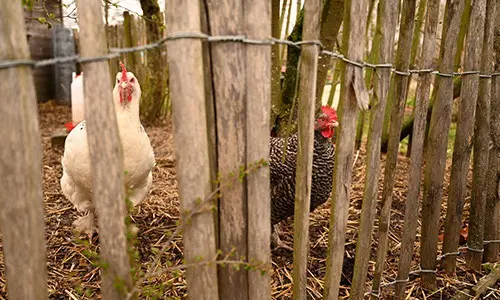
Step 2: Choose a Specific Call
Select a unique word, phrase, or action to call your chicken back. Make sure that it should be distinct from your natural voice.
The call can be as simple as clicking a bell or shouting a phrase such as “Lunchtime, girls.” A whistle or a unique bell can work as well. Just select one call and use it consistently.
Related: Chickens
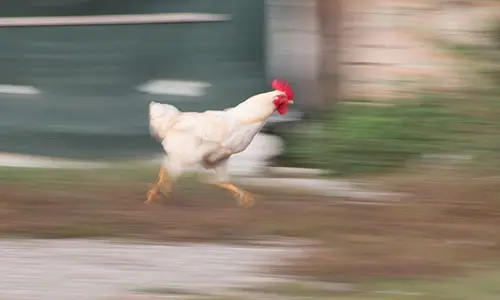
Step 3: Find a Special Treat
Modern chickens are alert to a fine meal. So, choose a special treat – one that’s not a part of your chickens’ regular feed. Some great selections include:
- Mealworm
- Pumpkin or sunflower seeds
- Cracked corn
- Watermelon wedges
The suggestion here is to choose a visible meal that’s easy to sprinkle around so that the entire flock can get it. All you need to do is make the unique call and spread the treat around the coop. The flock will soon notice and come back to you.
Now that you have the attention of your flock, the trick here is to lead them to the pen. Finally, toss plenty of special treats in pen and close the door once all the chickens enter the enclosure.
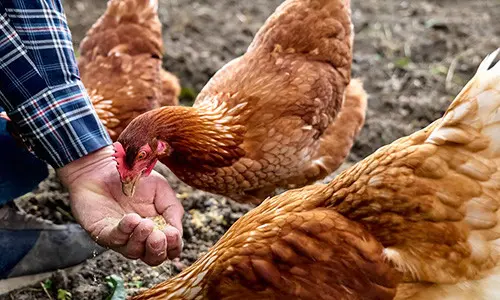
Step 4: Stay Consistent
Repeat the process 2-3 times daily. Once you train a single flock, the newer ones will be easier to train.
In most cases, the chicks hatched to your hen will always follow their mommies, and even the mature birds will adapt to the usual flock behavior and follow the commands.
However, you’ll have to be patient initially. Ensure that the chickens can spot when you’re distributing the treat because they’ll focus more on the food instead of the noise in the initial days.
Related: Ingenious Ideas For Taking Care Of Your Chickens
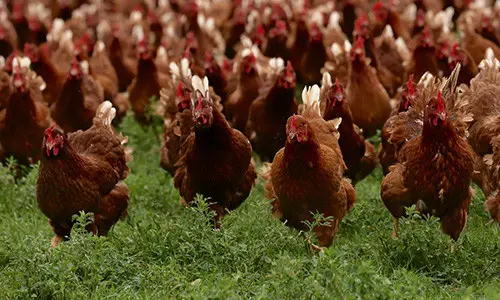
Step 5: Test Your Chickens
So, you’ve been following the training tactic for 2-3 weeks now. That’s great! Now, it’s time to test your flock.
All you need to do is hide the treats and just make the call and observe whether they respond to it. If yes, then you have successfully trained them.
Start the training again, and don’t fret if it’s the other way round. These animals take time to pick up cues, but they’ll get there eventually.
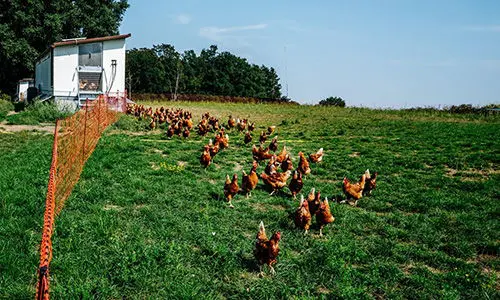
Step 6: Remove the Fences
If your flock has successfully passed the test, you can remove the temporary fences and expand the free range. Allow them to roam in larger regions and call them back whenever you spot danger.
Tips to Make the Training Effective
Although you know the training process, here are some tips to help you along the way:
- If you keep them trapped in the coop all day, getting them back is difficult if you call them earlier.
- Never let them choose with their tummies being full. If they aren’t hungry, they won’t respond to your treats.
- Initially, a single prime person must make the call because bringing in more than one can overwhelm the poultry chickens.
- Ensure that the coop has a mild temperature not exceeding 70 degrees F. It should have enough space, nest bags, and a plentiful food supply to provide a suitable environment for the flock.
Parting Thoughts!
Ready to train your chickens like a pro? Follow our training checklist above and make your chicken army obey your rules like an obedient soldier. Happy farming!
You may also like:
 Chicken Secrets Nobody Told You About
Chicken Secrets Nobody Told You About
Do you know why you should never put a tall fence around your house? (Video)
Best And Worst Livestock For Homesteaders
How To Keep Your Livestock Safe In Bad Winter Weather
10 Common Mistakes You Should Avoid If You Want To Raise Chickens

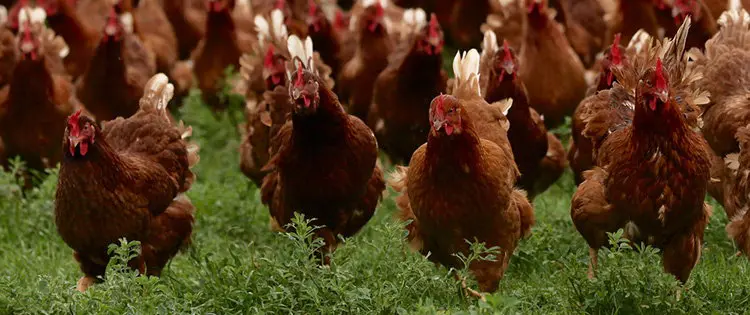








I did not intentionally train my chickens to come when I call, it just happened.
When I go out with their feed bucket in the morning, I call out, “Chook! Chook! Chook!” and my chicken minions run toward me, wings flapping, feet hitting the ground with a thunderous sound. Okay, maybe not the thunderous sound of hooves. More like the flappy sound of chicken feet.
But they do come running. If you weren’t used to it, you might mistake their eagerness to eat with an attack by a horde of man-eating killer birds.